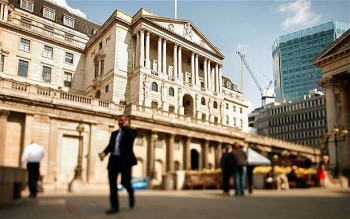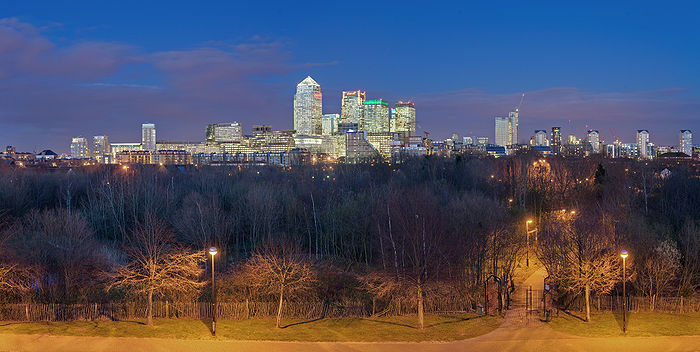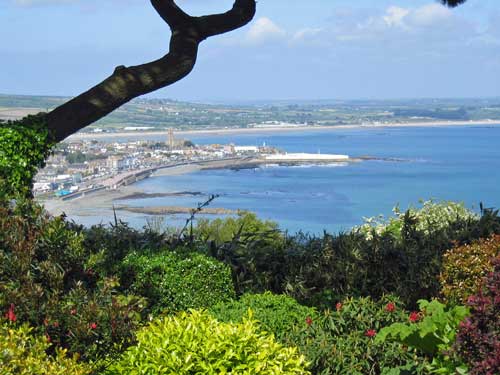Property Investors Update - COVID-19 and the economic depression
10-30-2020

PropertyInvesting.net team
We are in an economic depression: Its very challenging times for residential buy to let investors at this time, particularly in London. Rental demand is subdued and unemployment is rising. There are some serious headwinds that have created huge uncertainty and economic depression within the UK primarily COVID-19 and secondarily Brexit uncertainties.
Printing and Stimulus: The government has responded with record currency printing programme and an extended Furlough scheme to help stem huge unemployment. It's helped but ultimately unemployme nt continues to rise and will do so early 2021. The hope was that after the first COVID-19 wave, things would rapidly improve. The concern was a second wave could be even more devastating than the first. Unfortunately the number of COVID-19 cases continues to rise and deaths are following reaching 367 by 27 October. This is of course unnerving not only investors, but practically every person in the country.
nt continues to rise and will do so early 2021. The hope was that after the first COVID-19 wave, things would rapidly improve. The concern was a second wave could be even more devastating than the first. Unfortunately the number of COVID-19 cases continues to rise and deaths are following reaching 367 by 27 October. This is of course unnerving not only investors, but practically every person in the country.
COVID-19 Contagion: However, the death rate of 367 is still a fraction of the 1000-1100 seen early April 2020, and its hoped this level will start dropping soon, but this depends on the degree of success with track and trace, self-isolation, NHS work and support, and the "hands, face, space" mantra being taken very seriously by the whole population.
Industrial Heartlands Badly Hit: The massive increase in COVID-19 cases in Englan d seems to correlate fairly closely to the traditional industrial heartlands of England and Wales Lancashire, industrial Yorkshire, Teesside and the Valleys in South Wales. The degree to which this is cause by social deprivation, cramped living, the type of jobs people have, ethnicity, education-understanding etc is open to debate. The first wave hit London and its thought a reasonable level of immunity has already been reached in London. The second wave is hitting outlying industrial areas.
d seems to correlate fairly closely to the traditional industrial heartlands of England and Wales Lancashire, industrial Yorkshire, Teesside and the Valleys in South Wales. The degree to which this is cause by social deprivation, cramped living, the type of jobs people have, ethnicity, education-understanding etc is open to debate. The first wave hit London and its thought a reasonable level of immunity has already been reached in London. The second wave is hitting outlying industrial areas.
Environmental Factors: As weve described before, COVID-19 virus either thrives of dies due to environmental factors:
Sun the virus dies if it is hit by direct sunlight for a few hours it does not like the sun direct ultra-violet light
Heat the virus seems to thrive in the temperature range 3 to 15 deg C cool climates it does not like hot climates
Humidity the virus prefers dry climates it is thought the virus can get deep into the lungs by circulating in dry climates and entering any enflamed parts of your lungs that might have been enflamed by very dry cold air, pollution or an existing cold-bronchial-coughing condition
Wind the virus does not seems to like wind or well ventilated environments it prefers stagnant cool environments
Ventilation the virus thrives in poorly ventilated rooms or buildings
Pollution its likely the viral particles can attach themselves to small particulate pollution in cities and then swirl around and be ingested by the general public outside (and also inside buildings)
Air Conditioning a low quality air conditioner that does not filter the air properly likely does more harm than good because the cool environment it creates can help the virus to survive whilst the virus can circulate and attach onto particles and dust
Social factors: As we have outlined before, here are some social factors that seem to increase the chance of contracting COVID-19 transmission.
Living in a multi-generation family home, particularly if this is in cramped living condition.
Work in the service sector that has direct interfaces with the general public or work in very close proximity to other people (e.g. meat packing factories, public transport, hospitals, taxis)
Working indoors
Mixing with different types of people indoors
If you dont wear a face mask
If you dont wear glasses (it is thought the virus might enter via the moisture in the eyes and by wearing glasses you are also far less likely to rub your fingers with the virus on it, into your eyes and thence transferring into your body)
You are young and socially mix with many other people and households either at School, College or University or socially in cafes/bars etc
If you dont regularly wash your hands
If you dont stay 2m away from other people at all times
If you expose yourself to large viral loads for example standing next to someone in church who sneezes
If you shout, sing or talk loud or are next to someone that does this also this encourages spit, and droplets of moisture in the air to travel over large distances from your mouth to other people
If you simply dont care if you get it for instance a heavy drinker down a pub that forgets about social distancing
Cities Impacted More Than Country Areas: The cities where there is more pollution, denser population, less wind-ventilation, and more social mixing are the places where COVID-19 are increasing dramatically in England and Wales in areas not badly hit in the first wave (e.g. away from London). However, it does seem that some level of immunity is building up for example in a meat packing factory in Cambourne Cornwall, despite locally very low levels of COVID-19, 170 people out of he workforce of 750 were tested positive but almost all those who did positive did not have any symptoms. This example gives hope that the infection to death ratio will continue to drop over time. Lets hope vaccine is introduced early 2021 and then its really gets the COVID-19 pandemic under control.
Dosage: There is also some evidence that dosage is important if you get a large dose of the virus your immune system will not be able to fight it off and you were get the severe symptoms, hence the importance of social distancing, wearing masks when necessary and washing hands thoroughly and regularly. Also not touching your face nose or mask avoiding spread and contamination.
Property Investors: Meanwhile the property market has been affected differently in different areas. We will list the pluses and minuses that are effecting house prices:
Positive Stimulation
Record low base rates and lower interest rates
Massive currency printing supporting banks and continued lending
Furlough Scheme helping  stem unemployment
stem unemployment
Banks helping-supporting distressed home owners
Pent up demand after the last lockdown
Realisation by many how important it is to live in a nice house or flat (instead of traveling and spending money socialising in the COVID times)
Stamp duty holiday up to £500,000 until end March 2021
House prices in some rural and coastal-holiday areas have risen sharply as people plan to work more from home making lifestyle choices
Property prices in most provincial areas have risen after the Tories got a clear majority and also promise investment in the north and these areas are also playing catch-up to London the ripple effect moving through
Negative Stress
COVID-19 pandemic causing economic stress and reducing the ability to perform normal business - like viewing properties etc
Backlog of transactions not enough conveyan cing solicitors
cing solicitors
Brexit uncertainty where we leave the EU 31 Dec without a deal and the transitional issues in 2021
Massive increase in unemployment
Low wage growth
Realisation that many office workers in places like London may only have to work in an office on occasions hence people have started to move out of London creating likely temporary stress in the London market (this is likely to reverse April 2021 onwards)
London prices are being depressed also by lack of international travel since London is the playground of the global rich again this is likely to switch around April 2021 as the summer season kills off COVID-19, more travel gets going
Overall its worth bearing in mind that after the 1918-1920 Spanish Flu pandemic everyone partied and there was a big economic boom in the early 1920s the so called roaring 20s and this could very well happen from April 2021 once a vaccine gets widely used and the second and/or third waves have gone through regions in the UK.
Trends: A few general trends to highlight that are feeding through into the property market and affecting property prices and demand, that are worth bearing in mind for investo rs:
rs:
Premium for gardens and outdoor spaces - to mitigate the risk during another lockdown (and people have enjoyed their gardens especially during the pandemic, those without have suffered)
A premium to home offices outside assisting in home working
A premium to balconies in flats (flats without balconies or outdoor spaces are less marketable)
Spacious rooms and houses are in demand possibly because it is easier to socially distance and entertain guests
Premium of country property particularly coastal properties with view that also have good mobile phone signal and high speed fibre-optic broadband (parts of Cornwall and Devon spring to mind)
Office commercial premises will be severely impacted long term by COVID-19 now people have got used to working from home, and more flexible working hours and scheme will be introduced, its likely the amount of office space required could be halved. Residential compared to commercial looks like a far better place to be unless you are into garages, self storage or logistics-delivery support centres (out of town).
Retail and Logistics the pandemic has accelerated people use of computers to order goods and services over the internet so expect retail commercial demand to plummet as more busine ss go on-line. Expect more delivery vans, more traffic jams, and less use of public transport for fear of catching COVID-19 moving forwards.
ss go on-line. Expect more delivery vans, more traffic jams, and less use of public transport for fear of catching COVID-19 moving forwards.
We expect to see strong house price growth for the next few months outside London particularly in the market towns, smaller historic cities and select holiday-coastal areas. If the stamp duty holiday is not extended 31 March 2021 this has to remain the base case, property prices are likely to drop March 2021 onwards. How much by is very uncertain. Lets hope they dont crash if they did dip sharply it's likely the government would intervene with measure to help. There is currently talk of the government helping with 95% mortgages for first time buyers these are the types of measures that would support property prices in 2021. Another obvious one which given the second pandemic wave would seem appropriate is the extension of the stamp duty holiday (or at least a phasing out of the holiday) from 31 March for say another six months.
If you have any queries or comments, please do not hesitate to contact us on enquiries@propertyinvesting.net

